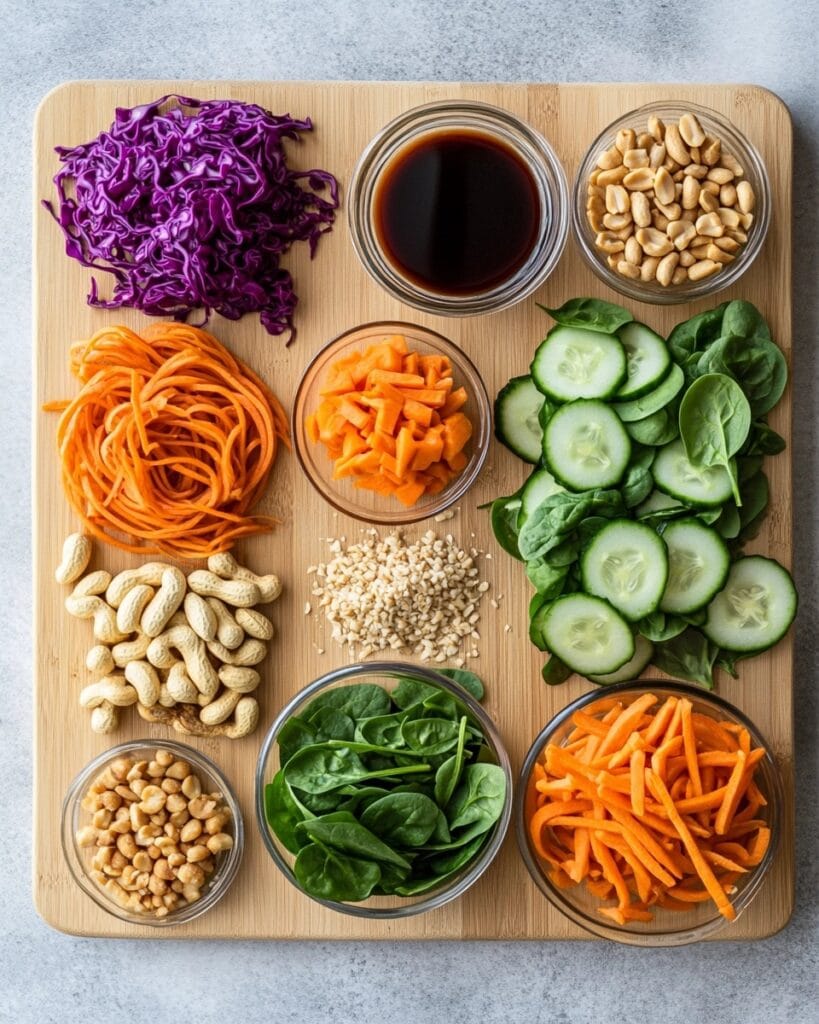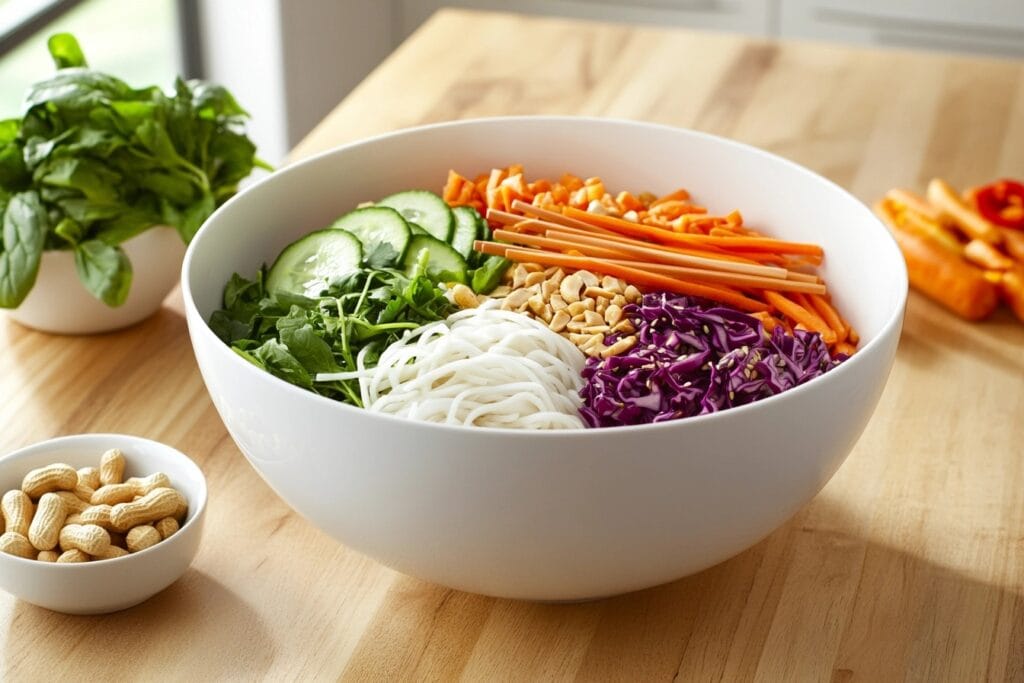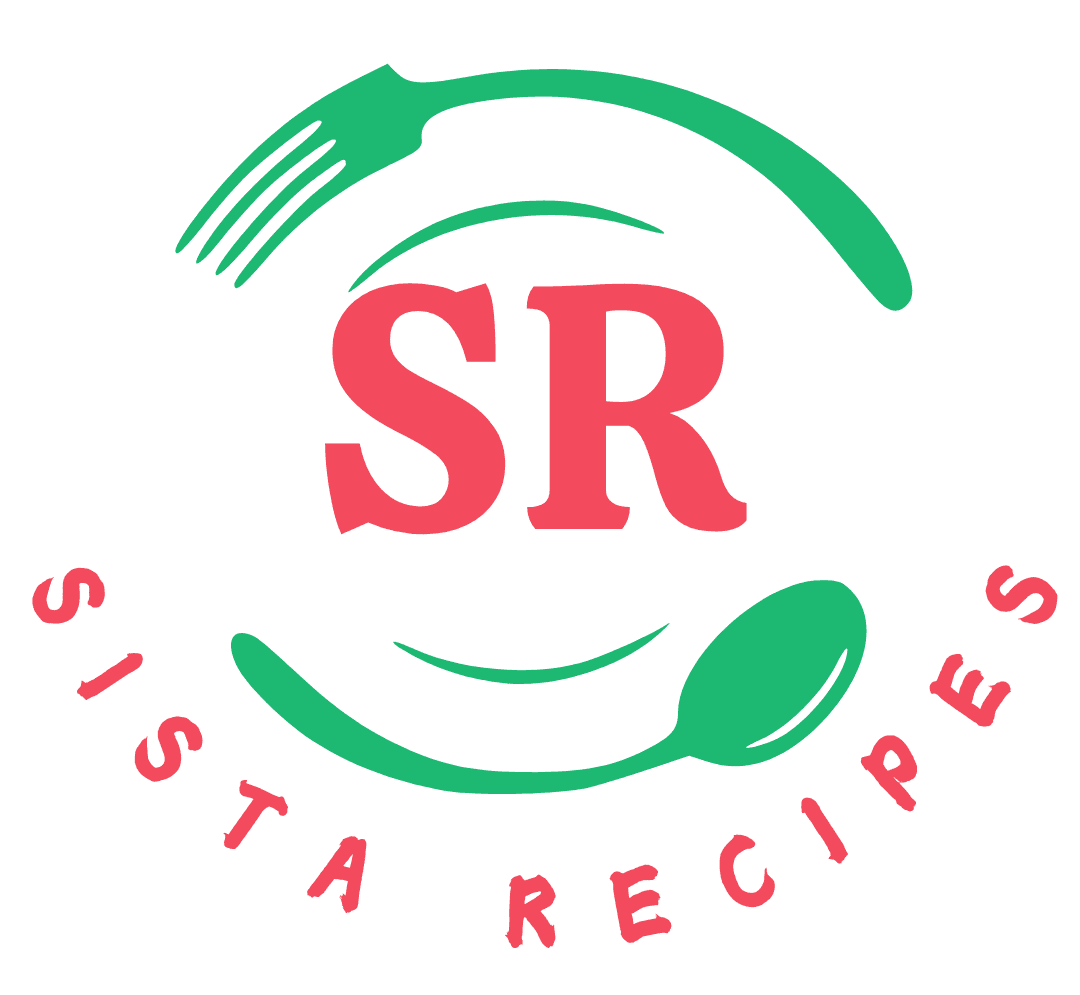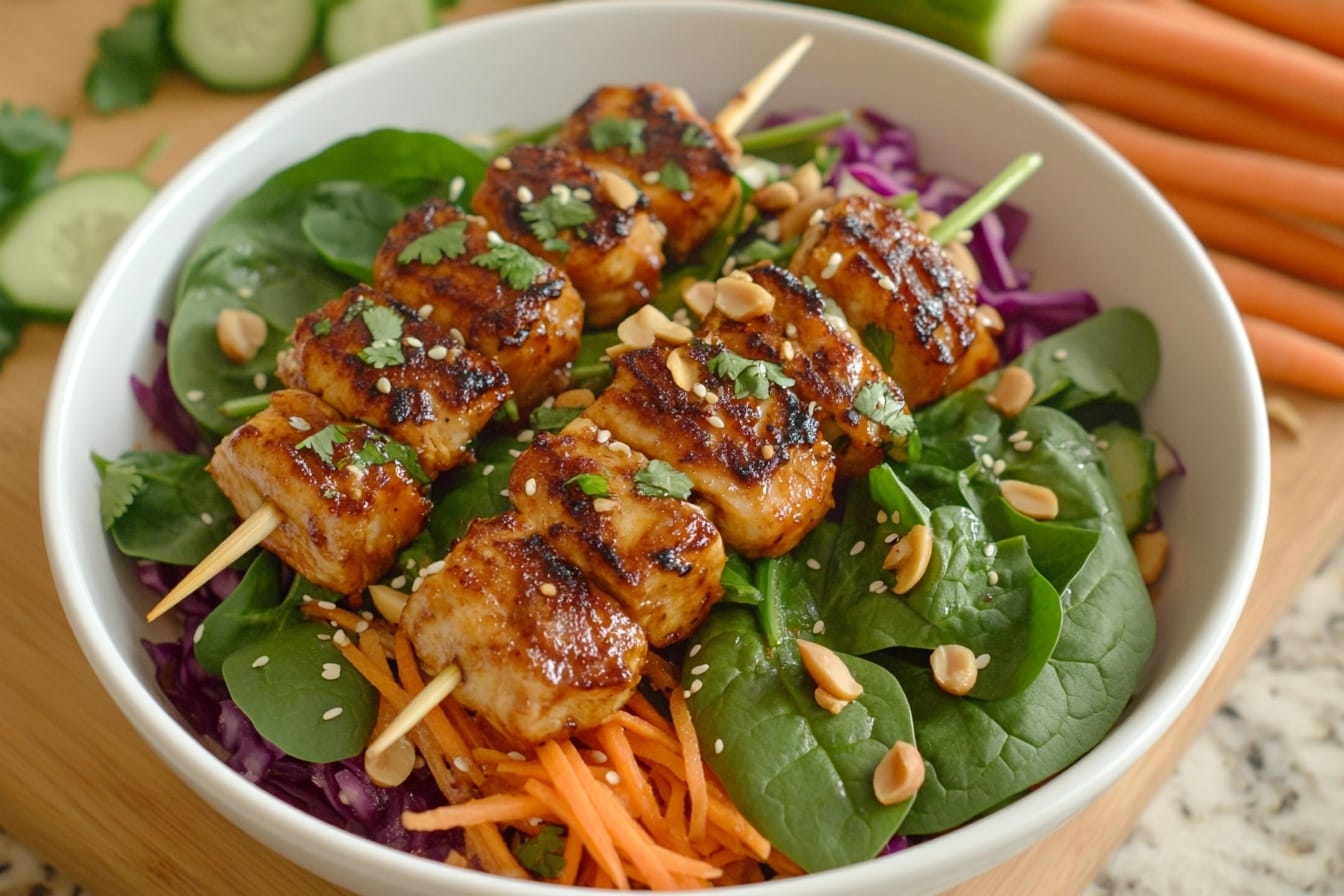Introduction
Northeastern salad Chinese cuisine, also known as Dongbei cuisine, is a treasure trove of bold flavors and hearty dishes that shine in cold salads like this spinach, peanut, and cold noodle recipe. My first encounter with a Northeastern salad happened during a food tour, where a chilled noodle dish caught my attention with its perfect balance of sweet, salty, and tangy flavors. It was an unforgettable experience that inspired me to recreate the magic in my own kitchen.
This salad, combining spinach, peanuts, and cold noodles, is a quintessential Dongbei-style dish that brings together simplicity and sophistication. Whether you’re a busy parent looking for a quick breakfast solution, a student exploring new recipes, or a food enthusiast who loves experimenting, this dish will cater to your needs. Moreover, its versatility makes it a hit at potlucks, barbecues, and even family style dinners. If you enjoy pairing appetizers, you can discover complementary Northeastern-inspired appetizers like vegan soup dumplings for a full Northeastern Chinese experience.
What is Northeastern Salad Chinese Cuisine?
Northeastern Chinese cuisine is deeply rooted in the agricultural traditions of Dongbei, a region known for its cold climate and abundant harvests. This has led to the creation of dishes that are hearty yet refreshing, using fresh, seasonal ingredients to highlight their natural flavors. One key aspect of Dongbei cuisine is its cold salads, also known as “Liangcai.” Unlike typical Western salads, these dishes feature cooked and blanched vegetables combined with chilled noodles, tangy vinaigrettes, and crunchy toppings like peanuts.
These salads play a crucial role in Dongbei’s food culture, often served as appetizers or sides during family gatherings and celebrations. The emphasis on balancing flavors—sweet, salty, sour, and savory—makes Northeastern salads a culinary delight. For those looking to expand their repertoire of Chinese dishes, explore more vegan Chinese recipes with a twist of Northeastern flavors to complement this salad beautifully.
Why This Recipe Stands Out
This Northeastern salad is so much more than just a dish; it’s truly an experience that brings together vibrant flavors and unique textures. To begin with, it stands out for its remarkable ability to cater to a variety of preferences and lifestyles. Whether you’re a vegetarian seeking a nutritious option, someone on a low calorie diet aiming for a light yet satisfying meal, or simply looking for a quick and delicious recipe to whip up in no time, this salad fits the bill perfectly. Moreover, the combination of blanched spinach, roasted peanuts, and chewy cold noodles creates an exceptional harmony of textures and flavors. Each ingredient contributes something special, making every bite both satisfying and memorable.
Additionally, this recipe celebrates the use of everyday ingredients in innovative ways. With a straightforward preparation process, you can enjoy an authentic taste of Dongbei cuisine without spending hours in the kitchen. The customizable nature of the dish also means you can add your own twist by incorporating extra toppings or switching out ingredients to suit your preferences. And for those who enjoy pairing dishes, learn how to pair Northeastern Chinese salads with sweet potato based side dishes for a truly satisfying meal.

Ingredients for the Perfect Northeastern Salad Chinese Recipe
The beauty of this salad lies in its simplicity and reliance on fresh ingredients. Below is a detailed table of what you’ll need:
| Ingredient | Purpose | Substitutes |
|---|---|---|
| Sweet Potato Noodles | Provides chewy texture | Soba or buckwheat noodles |
| Spinach | Adds a vibrant green and mild flavor | Kale or bok choy |
| Red Cabbage | Crunch and color | Napa cabbage or purple lettuce |
| Matchstick Carrots | Sweetness and texture | Julienned zucchini |
| Cucumber | Freshness and crispness | Celery or daikon radish |
| Roasted Peanuts | Crunch and nuttiness | Sunflower seeds or cashews |
| Cilantro | Aromatic garnish | Parsley or green onions |
| Soy Sauce | Base of the vinaigrette | Tamari (gluten-free) |
| Chinese Black Vinegar | Adds tangy depth | Rice vinegar or apple cider |
| Sesame Oil | Nutty aroma | Olive oil with a hint of sesame |
| Sugar | Balances savory and tangy flavors | Honey or maple syrup |
Each ingredient plays a pivotal role in creating the dish’s distinctive taste and satisfying texture, ensuring every bite is full of flavor. Moreover, if you happen to be missing an ingredient, there’s no need to worry. Fortunately, there are plenty of substitutions available that can seamlessly keep the recipe intact without compromising its essence. This flexibility makes it easy to adapt the dish to what you have on hand, ensuring you can still enjoy its deliciousness no matter the circumstances.

Step-by-Step Guide to Making Northeastern Salad Chinese Style
Step 1: Preparing the Noodles
To begin, start by boiling a pot of water and adding a pinch of salt to enhance the flavor of the noodles. Once the water reaches a rolling boil, gently add the sweet potato noodles and cook them for about 6–8 minutes. Be sure to stir occasionally during this time to prevent the noodles from sticking together. When the noodles are tender yet firm to the bite, promptly transfer them to an ice bath. This crucial step not only halts the cooking process but also locks in their delightful chewy texture, ensuring they remain perfect for the salad. After chilling the noodles thoroughly, drain them well to remove any excess water, and then set them aside for assembling the dish later. This method guarantees that your noodles will be both flavorful and perfectly textured.
Step 2: Blanching the Spinach and Vegetables
To begin, bring another pot of water to a boil and ensure it reaches a rolling boil before proceeding. Next, add the spinach and blanch it for no more than 30 seconds, as this will help preserve its vibrant green color and tender texture. Then, using a slotted spoon, carefully transfer the spinach to an ice bath, which immediately stops the cooking process and locks in its freshness. Once it has cooled completely, gently squeeze out any excess water to prevent sogginess, and set the spinach aside for later use. Furthermore, you can repeat this same process for the red cabbage and carrots if you prefer them slightly softened; however, these vegetables can also be used raw if you want to add extra crunch and texture to the salad. This flexibility allows you to customize the dish based on your taste preferences.
Step 3: Crafting the Vinaigrette
In a small mixing bowl, combine three tablespoons of soy sauce, three tablespoons of sesame oil, one tablespoon of Chinese black vinegar, and one tablespoon of sugar. Whisk the ingredients together until the sugar dissolves completely. Taste the vinaigrette and adjust the flavors as needed, adding a splash more vinegar for tanginess or a pinch of sugar for sweetness.
Step 4: Assembling the Salad
In a large salad bowl, carefully toss together the chilled noodles, blanched spinach, red cabbage, carrots, and cucumber slices to ensure an even mix of textures and colors. Next, drizzle the prepared vinaigrette evenly over the mixture, allowing it to coat every ingredient thoroughly. As you toss the salad gently, you’ll notice the vibrant vegetables and noodles soaking in the tangy, savory flavors of the sauce. This is truly where the magic happens, as the bold vinaigrette infuses the dish with its signature taste, transforming simple ingredients into a harmonious and delicious creation.
Step 5: Garnishing and Serving
For the finishing touch, generously sprinkle the roasted peanuts and freshly chopped cilantro over the top of the salad to enhance its crunch and aroma. Additionally, if you enjoy a bit of heat, you can add a dash of chili oil or a sprinkle of red pepper flakes to give it an extra kick. Furthermore, it’s a good idea to chill the salad for an additional 15–20 minutes before serving. This step not only allows the flavors to meld together beautifully but also ensures the dish is perfectly refreshing when enjoyed. As a result, you’ll have a salad that’s bursting with bold, harmonious flavors.
Regional Significance of Ingredients
The ingredients in this salad not only contribute to its delicious flavor but also reflect the cultural roots of Northeastern Chinese cuisine. Sweet potato noodles are a regional staple, valued for their versatility and ability to absorb robust sauces. Meanwhile, the combination of soy sauce, vinegar, and sesame oil in the vinaigrette showcases Dongbei’s love for bold, balanced flavors. The use of fresh vegetables like spinach and cucumbers highlights the region’s agricultural traditions, celebrating simplicity and seasonality.
Tips for Perfecting Your Northeastern Salad Chinese Recipe
Achieving the perfect Northeastern salad isn’t difficult, but a few tips can elevate your dish:
- Always use an ice bath for both the noodles and the vegetables to preserve their texture and freshness.
- Ensure the vinaigrette achieves the right balance of flavors—savory, tangy, sweet, and nutty.
- Use fresh, high quality ingredients to let the natural flavors shine through.
Pairing Suggestions for Northeastern Chinese Cold Salads
This salad is incredibly versatile and pairs wonderfully with other dishes. For example, light soups such as vegan soup dumplings complement its refreshing taste. Additionally, side dishes like sweet potato-based recipes add a satisfying contrast to the salad’s crisp and tangy profile.
Health Benefits of Northeastern Salad Chinese
This salad is not just delicious but also packed with health benefits. Spinach is rich in iron, vitamins, and antioxidants, making it a powerhouse of nutrients. Peanuts provide healthy fats and protein, while the sweet potato noodles are a gluten free carbohydrate source that offers sustained energy. The minimal use of oil and sugar ensures the dish remains low in calories, making it an excellent choice for anyone seeking a balanced diet.
How to Store and Reuse Leftovers
Storing leftovers is easy. Simply place the salad in an airtight container and refrigerate it for up to two days. To reuse, consider adding it as a topping for rice bowls or using it as a filling for wraps. If the salad seems dry after storage, refresh it with a drizzle of the vinaigrette or a splash of soy sauce.
Cultural Roots and Modern Appeal
Northeastern salads like this one bridge the gap between traditional Chinese cooking and modern culinary trends. While rooted in Dongbei’s agricultural heritage, the dish has gained global appeal due to its fresh ingredients, bold flavors, and adaptability to various diets.
Common Mistakes and How to Avoid Them
Some common pitfalls can affect the outcome of your salad:
- Overcooking the noodles will result in a mushy texture, so keep an eye on the timer.
- Skipping the ice bath can lead to limp vegetables and noodles, diminishing the salad’s overall appeal.
- Neglecting to taste and adjust the vinaigrette may leave the flavors unbalanced, so always sample as you go.
Variations and Customizations
This salad offers endless possibilities for customization:
- Add protein: Incorporate tofu skin, boiled eggs, or shredded chicken for added nutrition.
- Make it spicy: Mix in chili oil or Szechuan pepper for an extra kick.
- Keep it vegan: Ensure all ingredients, especially the soy sauce, are plant based.
FAQs
Can I use different noodles?
Yes, you can absolutely use substitutes like soba or buckwheat noodles, which work wonderfully in this recipe. Additionally, they bring their own unique flavor and texture to the dish.
What can I replace spinach with?
If you don’t have spinach on hand, alternatives such as bok choy, kale, or even Swiss chard are excellent options. Moreover, these greens maintain the nutritional benefits and texture that make the salad so delightful.
How long does the salad stay fresh?
Generally, this salad is best enjoyed within two days of preparation. However, if you store it properly in an airtight container in the refrigerator, you may find that the flavors develop further after a few hours of chilling.
How can I make it spicier?
To add a fiery touch, simply mix chili oil or red pepper flakes into the vinaigrette. Additionally, you can sprinkle a pinch of crushed Szechuan peppercorns for a more aromatic heat.
Yes, skip the ice bath for a warm version, but the salad is traditionally served chilled
Yes, you can skip the ice bath for a warm version of this salad. However, keep in mind that it is traditionally served chilled, which enhances the refreshing flavors and textures.
Conclusion
This Northeastern salad Chinese twist is not only a celebration of fresh ingredients, but also a perfect example of how bold flavors and effortless preparation can come together beautifully. Whether you choose to serve it as a breakfast dish, a side, or even a light dinner, this versatile recipe is sure to impress. Furthermore, its adaptability allows you to customize it to suit any occasion. So, why not give it a try today and let the vibrant flavors of Dongbei cuisine bring joy and brightness to your table?

